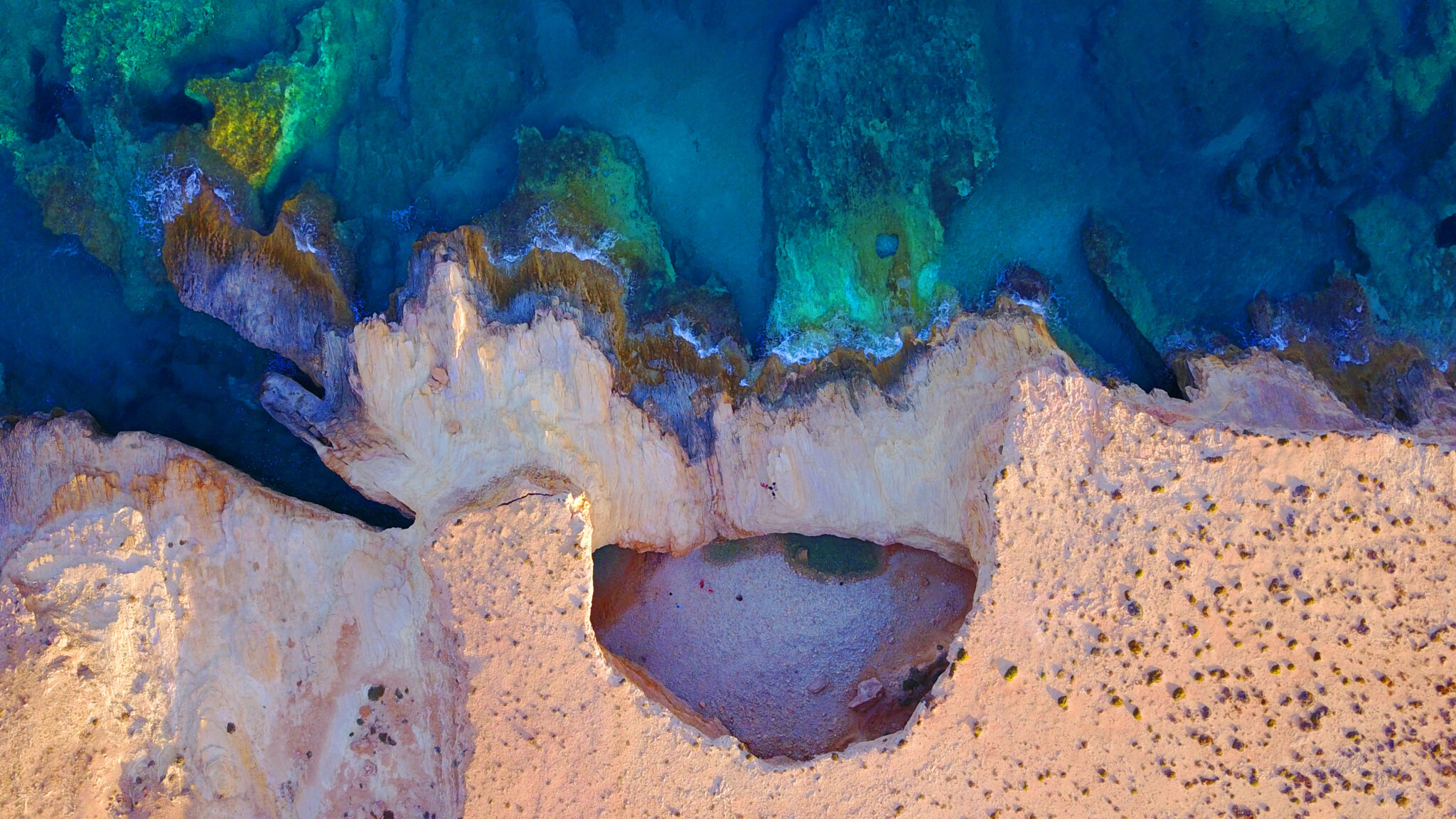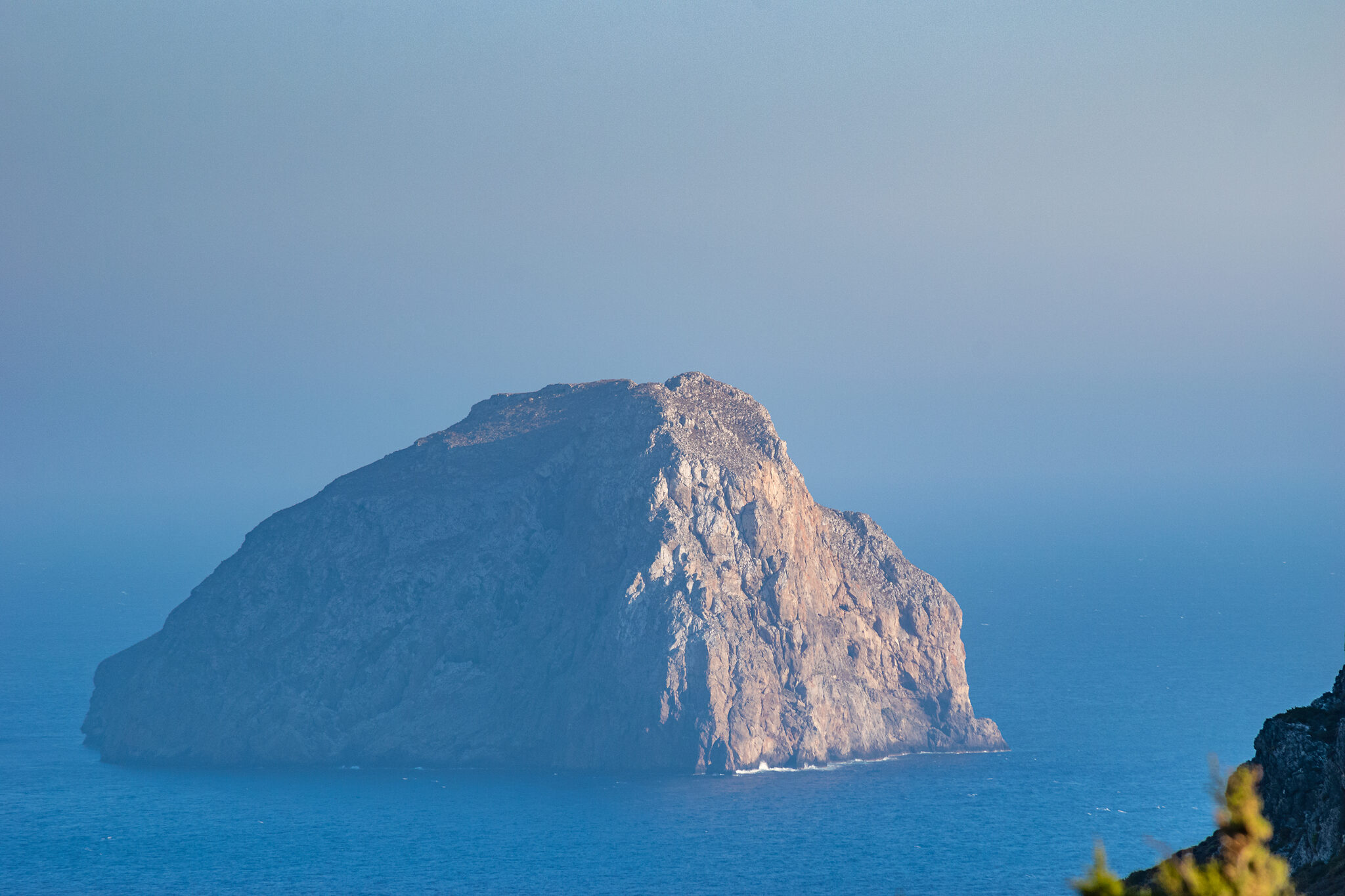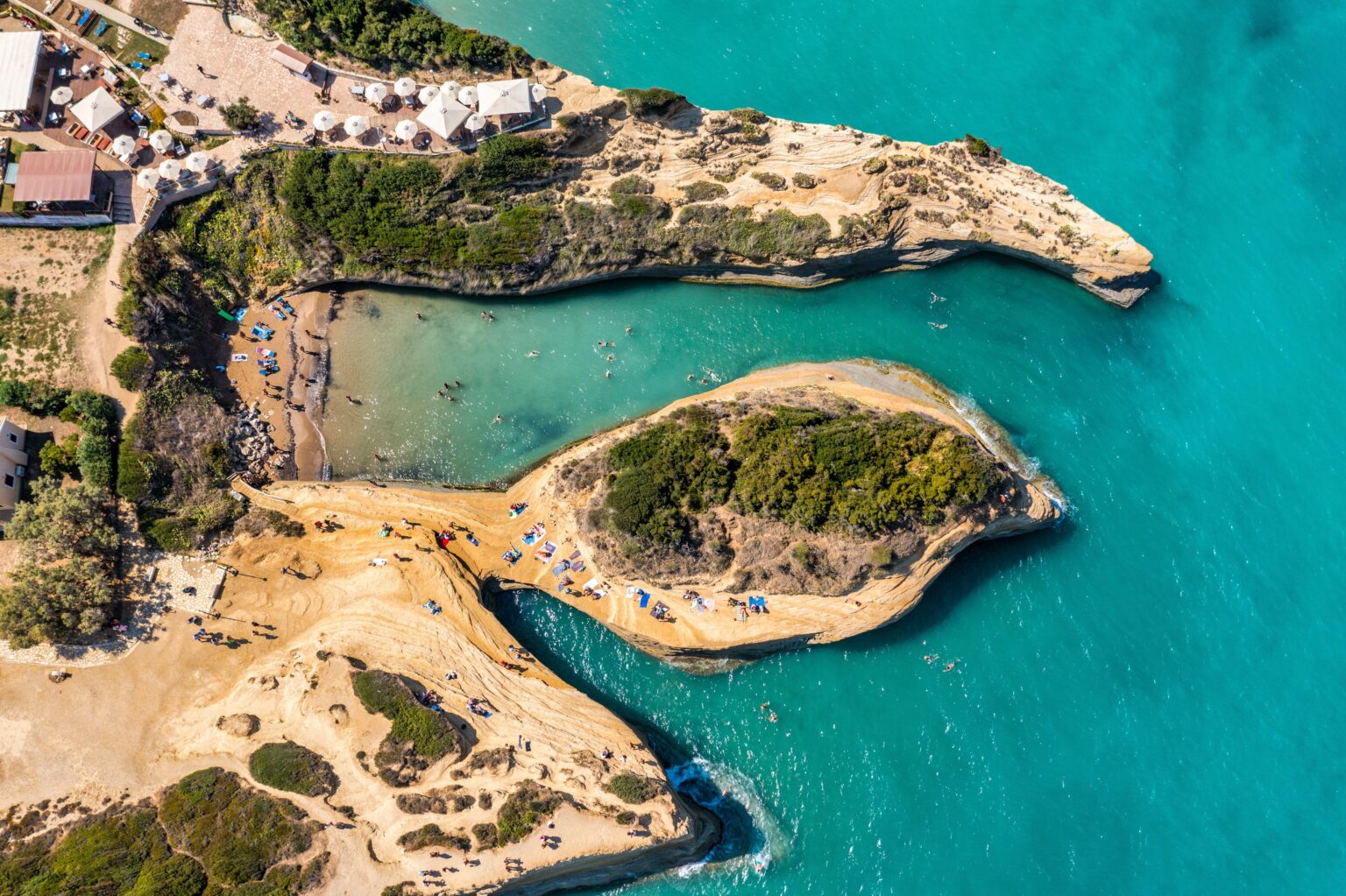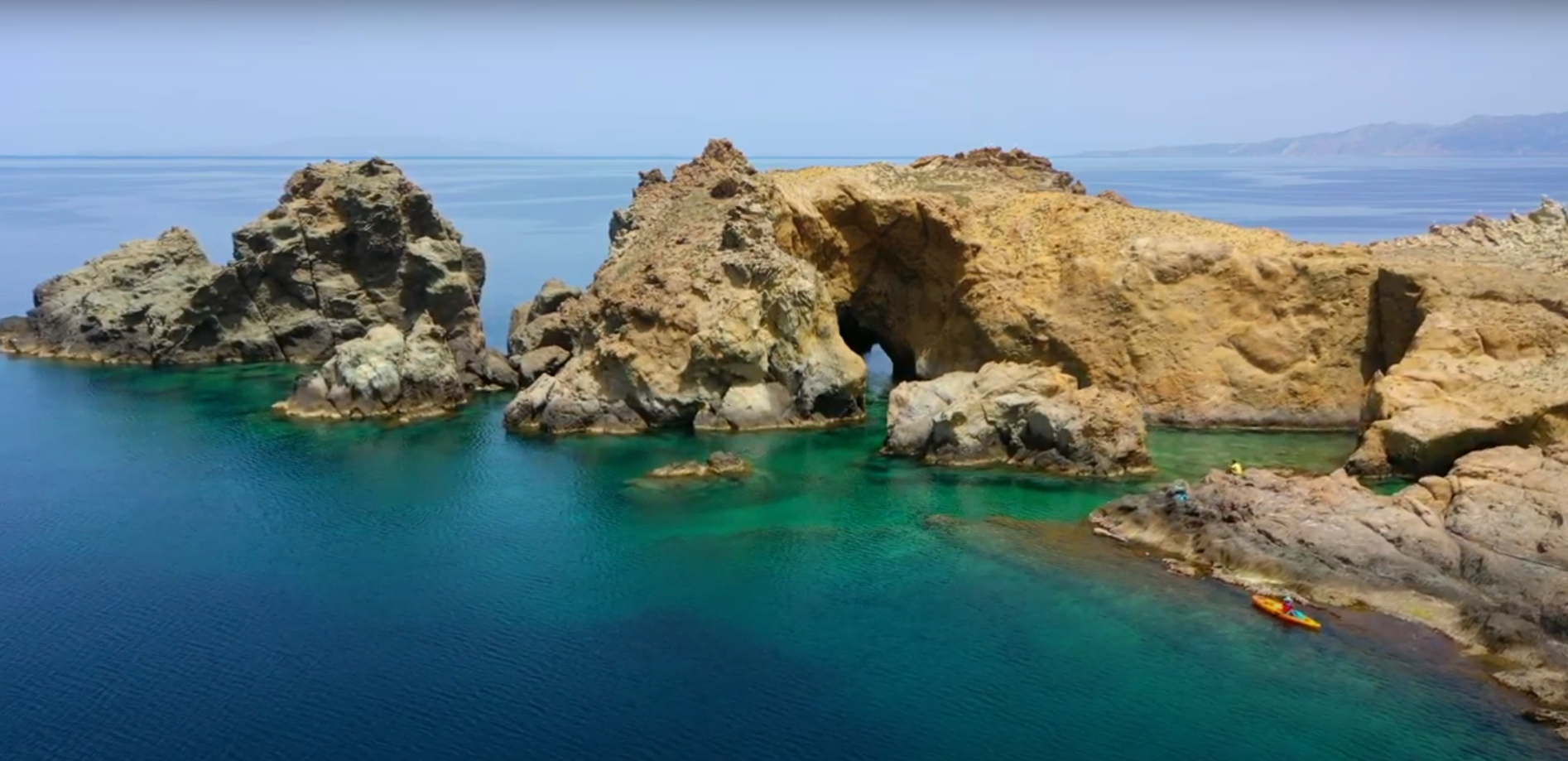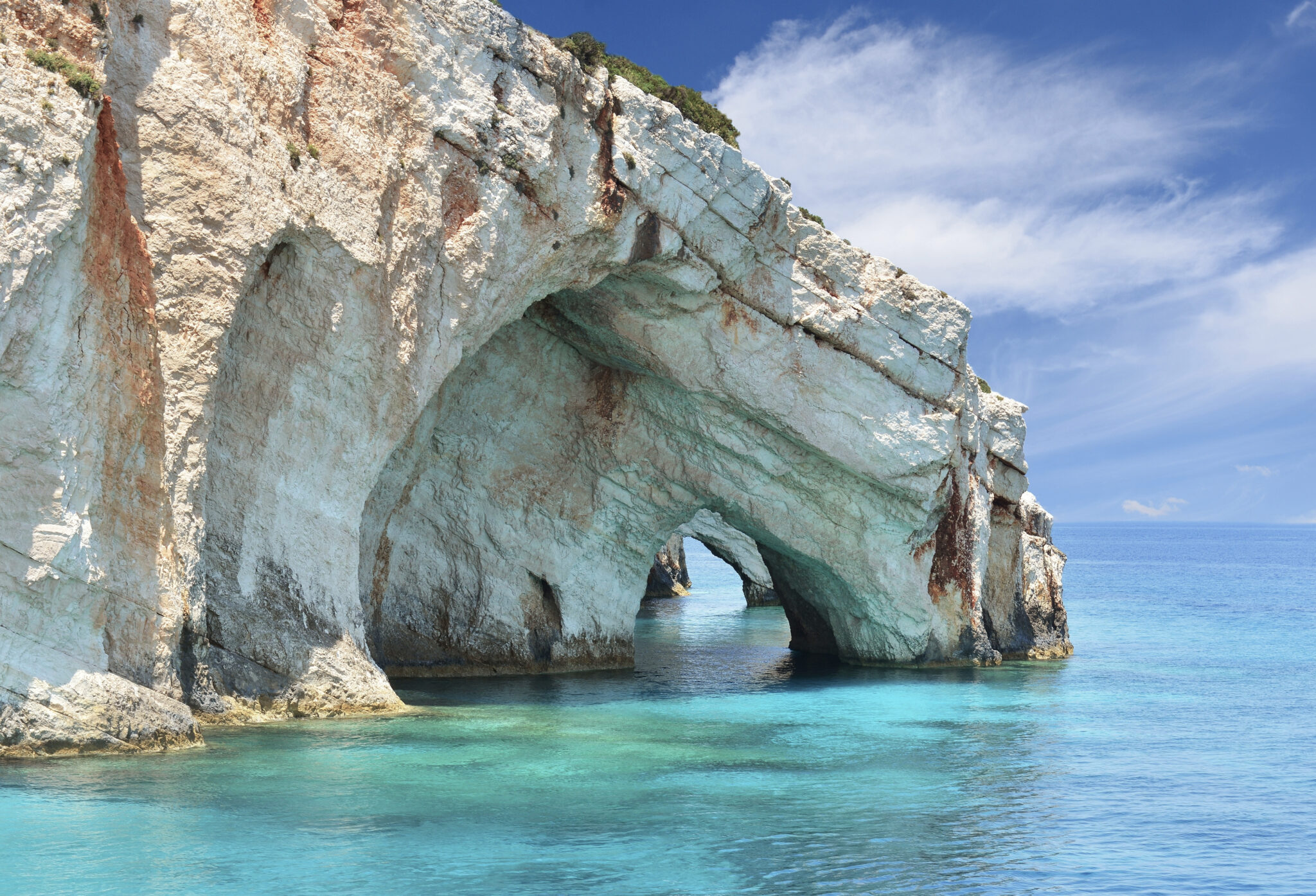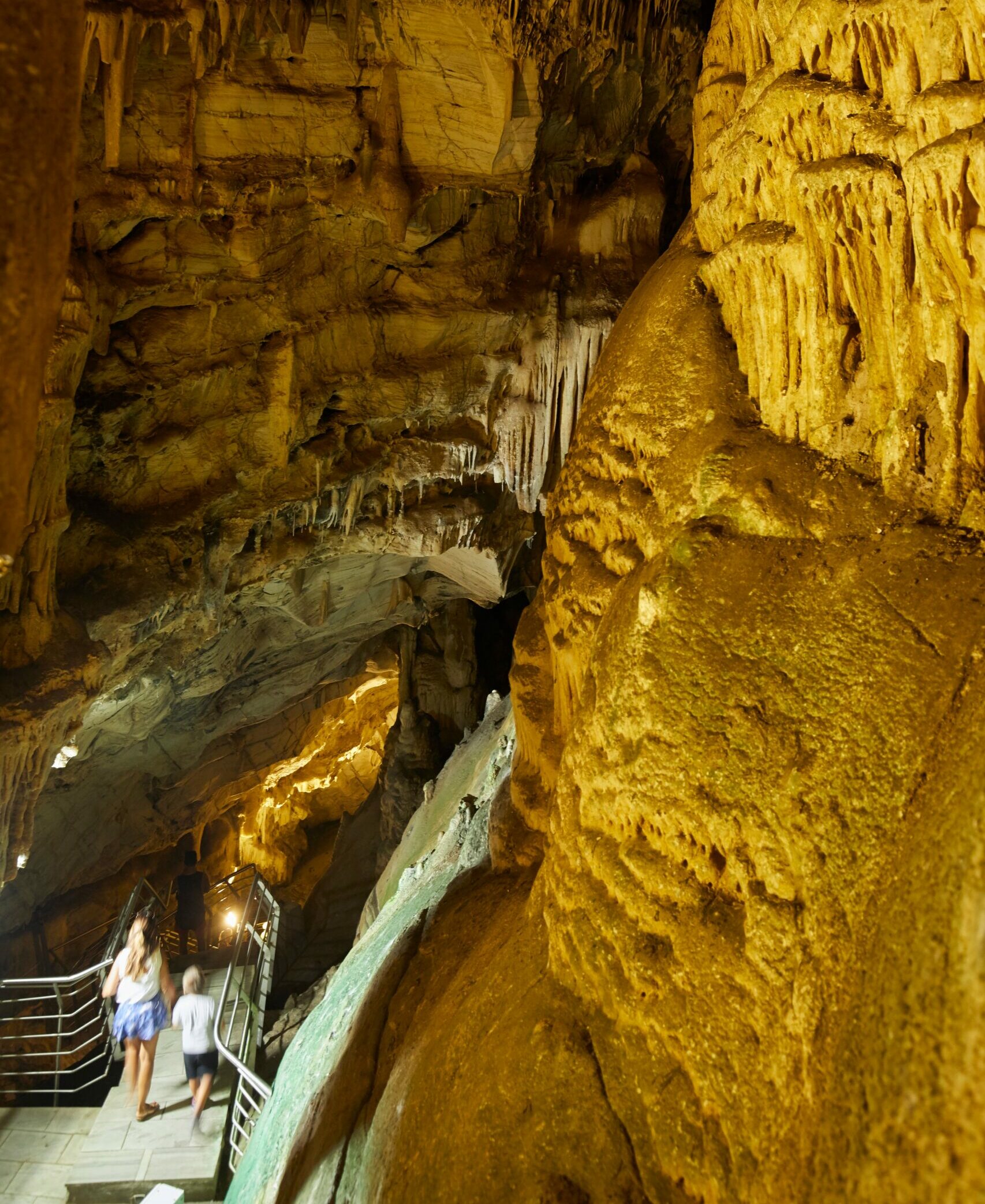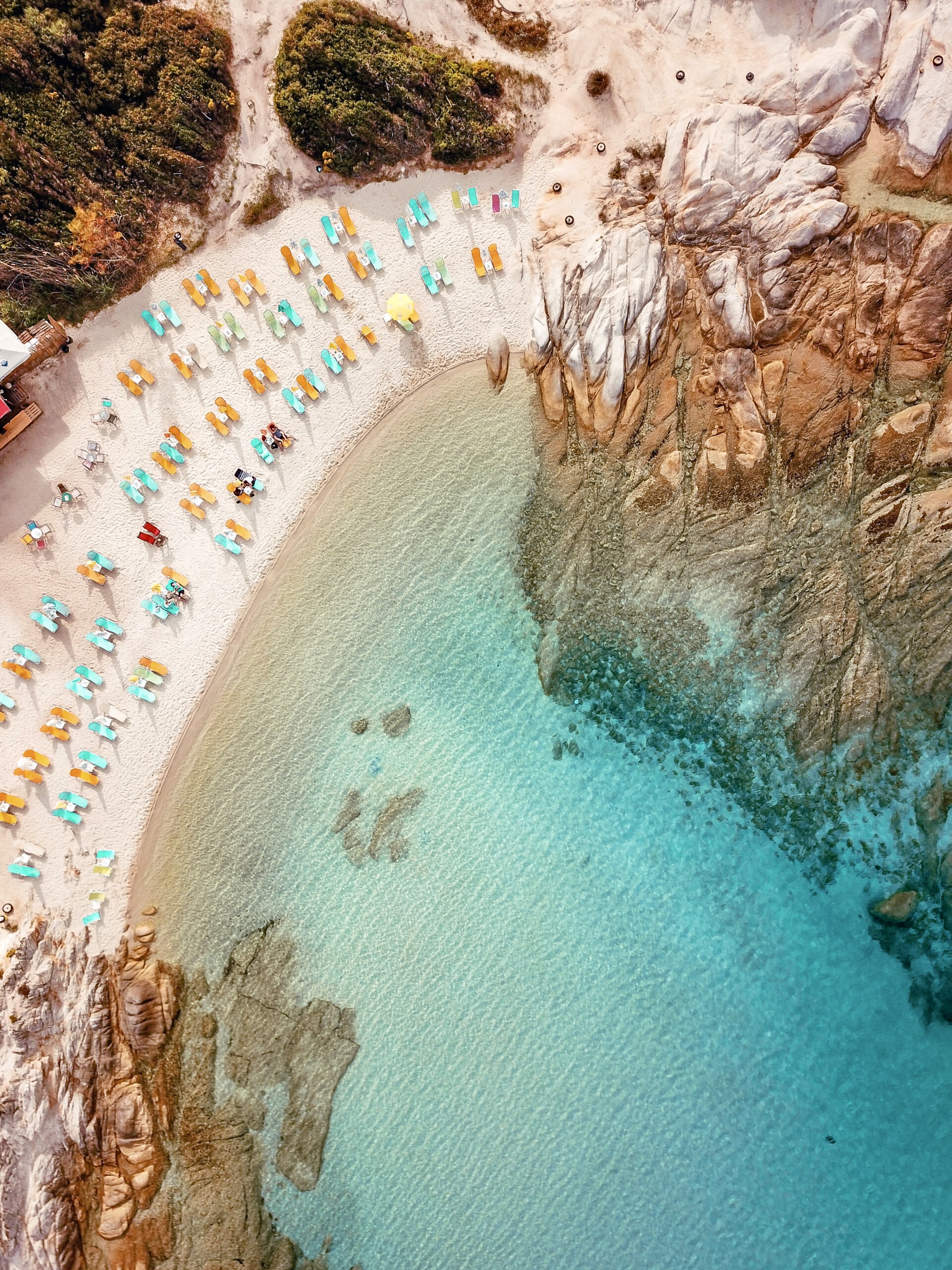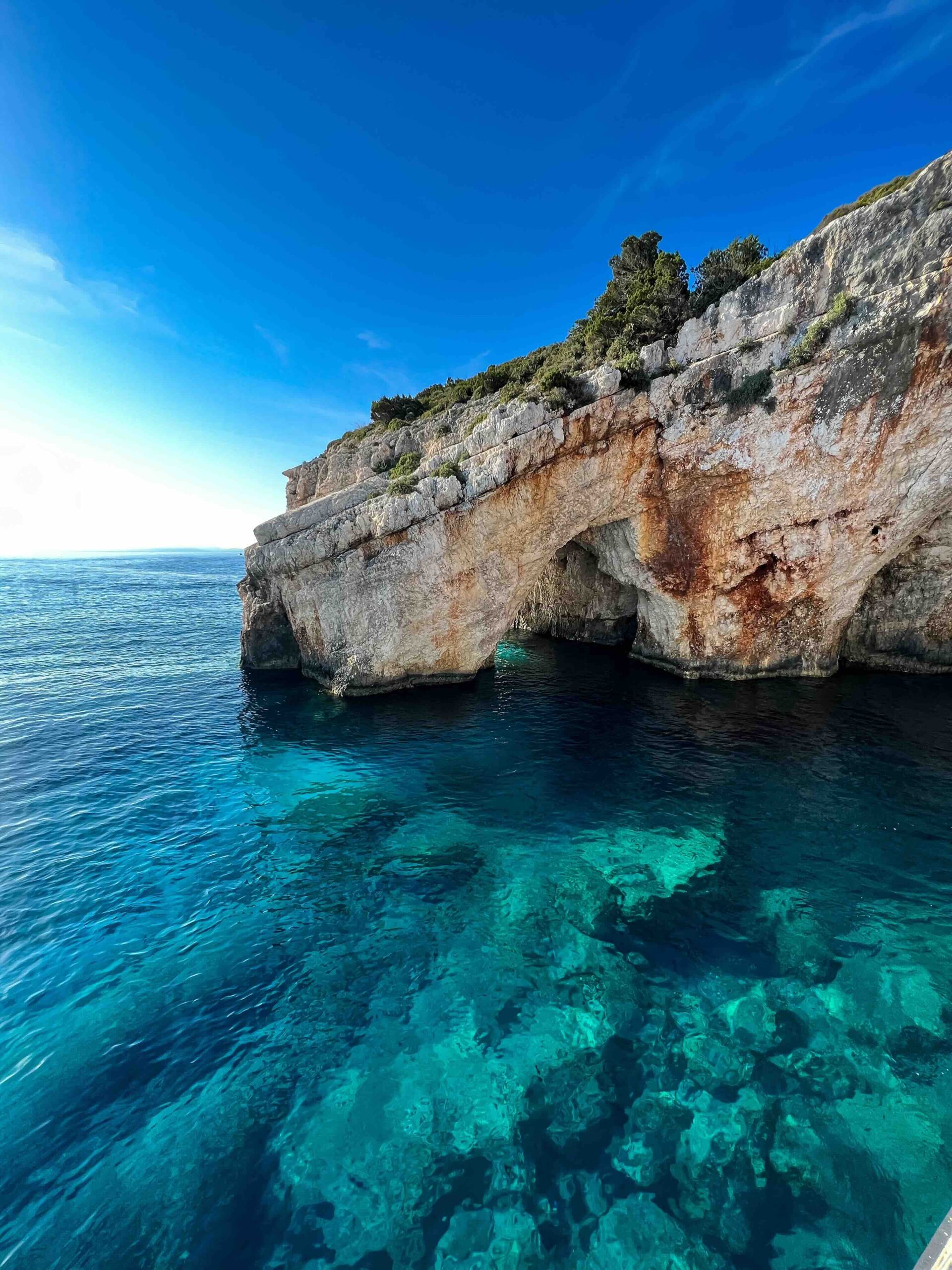Greece’s coastline is strewn with wonders: hidden beaches, coastal forests brushing the water’s edge, and seas shimmering in every shade from emerald to sapphire. Yet nowhere does nature outdo itself quite like in the sea caves, carved patiently into the rock as if inviting us to slip inside and explore.
From the Blue Cave of Kastellorizo, with its stalactites and soaring dome, to Hytra in Kythera, a refuge for falcons and monk seals; from the storybook caves of Paleokastritsa in Corfu to the volcanic grotto of Gerakia in Kimolos, with its shallow turquoise waters and dazzling seabed—the beauty is inexhaustible. Each cave hides its own secret, each dive a small miracle, and each visit a reason to fall deeper under the spell of the Greek sea.
01
Melissani Cave Lake, Kefalonia
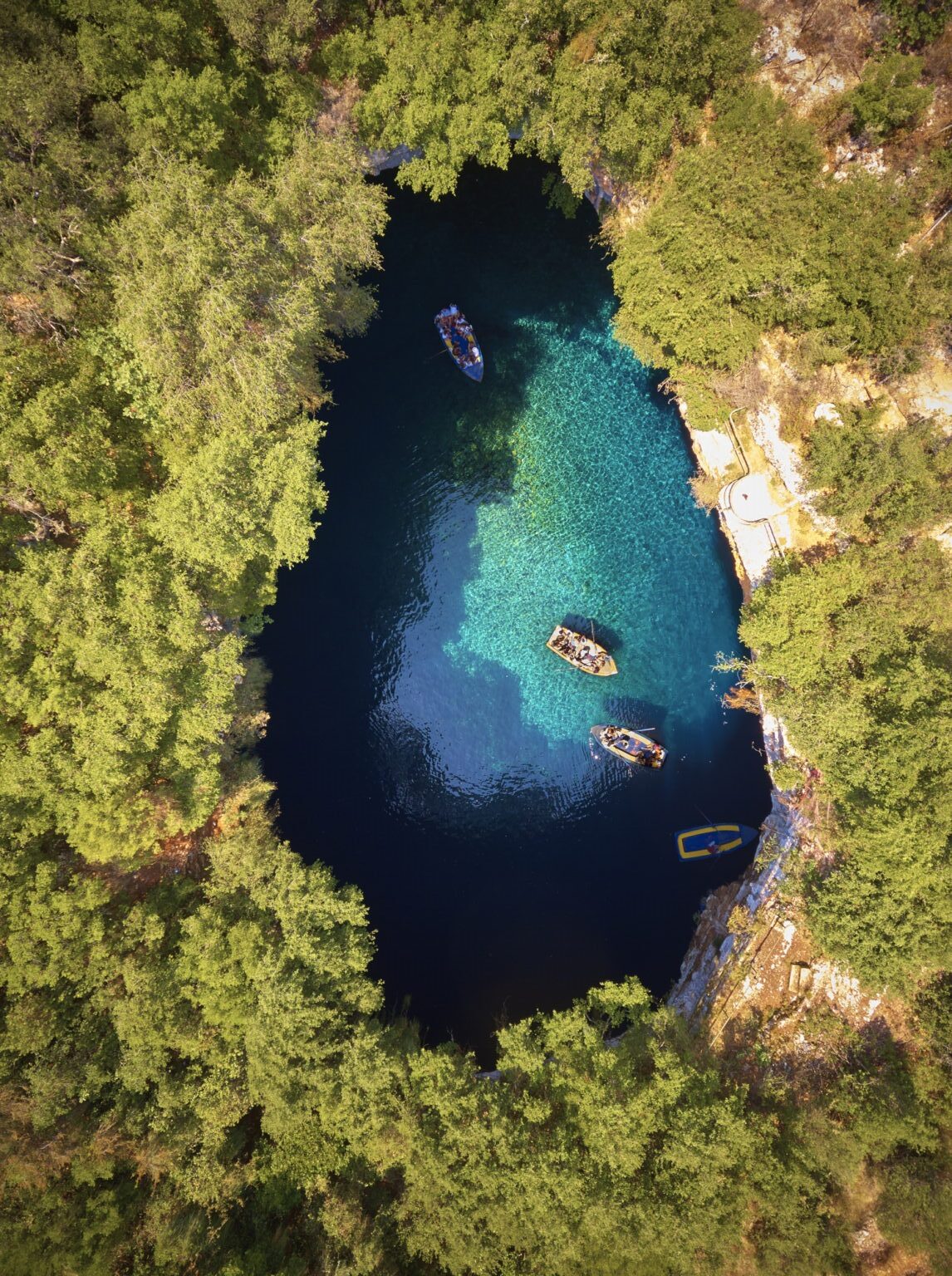
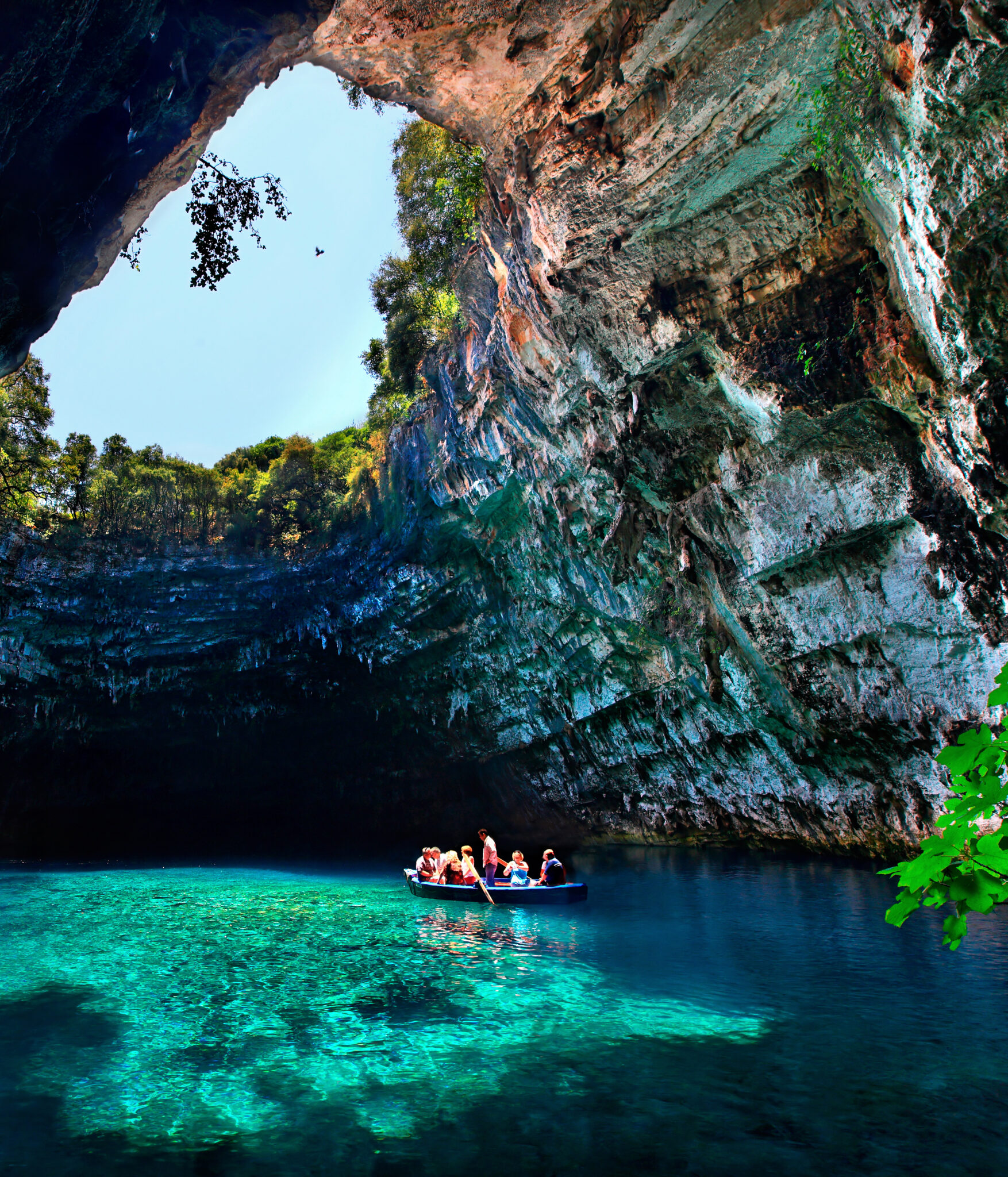
Only two kilometers northwest of Sami in Kefalonia lies one of Greece’s most extraordinary geological formations: Melissani Cave Lake. Its main entrance, a vertical opening, was created when part of the roof collapsed, leaving a natural skylight that opens dramatically into the interior. For visitors, a stairway carved into the rock now provides an alternative, easier way inside.
The exploration is done by boat, starting from the sunlit section before slipping into the darker, inner chamber. At the lake’s center rises a small island where archaeologists uncovered ancient finds. In prehistoric times, the cave had a sacred use: locals worshiped the god Pan here, along with the nymphs of myth. For this reason, Melissani is also known as the “Cave of the Nymphs.”
02
Gala Beach and Xylobatis Caves, Koufonisia
East of Pori Beach in Koufonisia, tucked beneath towering cliffs, lies one of the island’s most spectacular and little-explored spots: Gala Beach. A rare geological formation, it resembles a natural hole in the earth, almost otherworldly, with sunlight igniting the turquoise waters below.
You can reach Gala on foot from Pori, or more comfortably by boat that brings you directly to this secluded haven. Close by, the Xylobatis Caves reveal even more magic.
The cove hides two remarkable grottoes: the first, a long, tunnel-like passage cut clean through the rock; the second, a cave with its own small sandy beach inside—a paradise of light, sea, and solitude. Access is possible via the paved road linking Pori with the port, or even by swimming across from Pori itself.
03
The Sea Cave of Hytra, Kythera
Kythera’s coastline is studded with submarine caves, irresistible to divers. One of the most impressive is on Hytra (also known as Avgo, “the Egg”), a rocky islet south of Kapsali. In summer, boats depart daily from Kapsali for the islet, up until mid-September.
Hytra’s cave dazzles with its luminous colors, both within and beneath the surface, where the seabed resembles a natural swimming pool. The waters are strikingly clear, glowing with shades of turquoise and jade. Deep inside, a sheltered corner provides refuge for monk seals, underscoring the cave’s ecological importance.
The islet itself holds its own charms: it is home to Sempreviva, the golden-yellow “flower of eternal love,” whose name means “life forever,” and its cliffs serve as nesting grounds for Eleonora’s falcons, one of the rarest birds of the Mediterranean.
04
The Channel of Love, Corfu
On Corfu’s northern coast, near cosmopolitan Sidari, lies one of the island’s most romantic landscapes—the famed Canal d’Amour, or Channel of Love. Its name stems from local legend: couples who swim the length of the channel together are said to remain bound by a love that never fades.
Here, sculpted sandstone cliffs extend into the sea, forming natural passages and small sheltered coves. Sea and wind have shaped the rocks into a work of art with nature’s finest tools.
Access is easy, with paths and stairways guiding visitors to hidden corners of the shoreline. The waters are crystal-clear and ideal for exploration; with just a mask and fins, you can discover underwater caves and tiny natural pools scattered along the formations.
05
Gerakia Cave, Kimolos
Kimolos, with its limpid, turquoise waters and unspoiled Cycladic beauty, remains one of the few islands still largely untouched by mass tourism. Among its natural wonders, the northern coast conceals Gerakia Cave.
The cave enchants with its unbelievable shades of blue-green, offering visitors a memory to treasure forever. The best way to reach it is by boat or sea taxi, diving straight into the cave’s shallow waters.
Once inside, you can wade through, exploring its rock-carved vaults at leisure, immersed in an atmosphere both intimate and majestic.
06
The Blue Caves of Zakynthos
Among Zakynthos’ most celebrated natural wonders, the Blue Caves are famous for their otherworldly light. They owe their name to the dazzling reflections inside, where sunlight transforms both water and rock into a spectrum of blues—from deep cobalt to crystalline turquoise.
Located along the island’s northwest coast, the caves stretch from Agios Nikolaos to Cape Skinari. The formations include a whole series of openings, domed arches, and hidden grottoes, each one reflecting the Ionian Sea’s brilliance in a different way.
Access is either by private boat or on organized sea excursions, which run daily in summer until mid-September. For something more intimate, kayaking trips depart from Agios Nikolaos, tracing the northern shoreline through the caves, with Kefalonia looming across the horizon—a journey through a liquid labyrinth of light.




